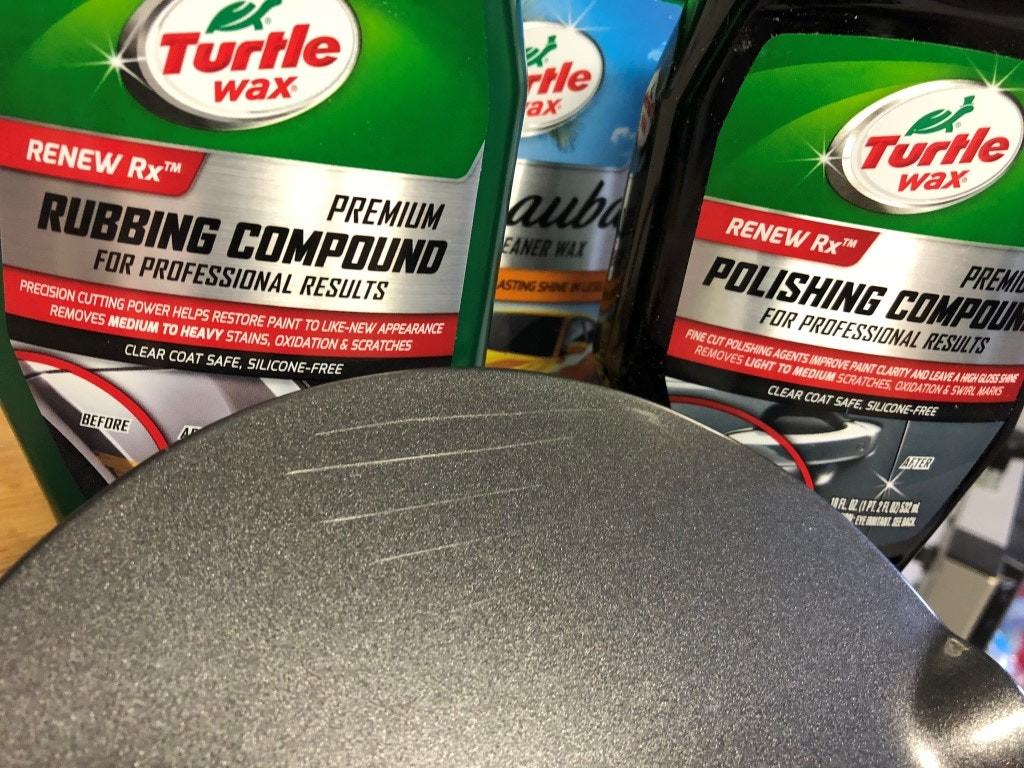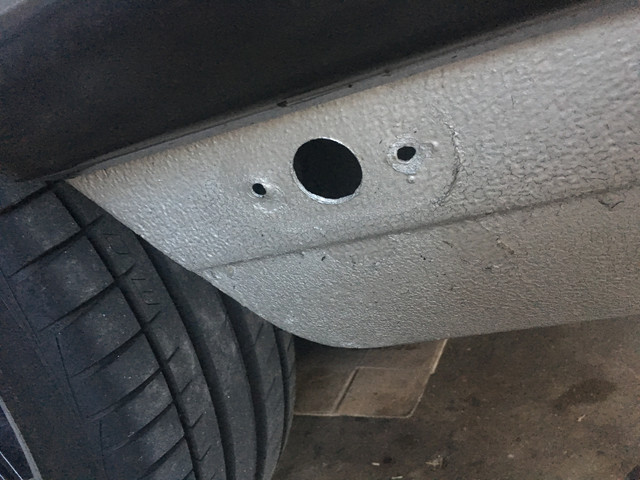How to Fix AC Not Blowing Cold Air in Car: A Comprehensive Guide
Is your car’s AC blowing hot air instead of a refreshing chill? Don’t sweat it! This comprehensive guide from CARDIAGTECH.NET will walk you through the common reasons why your AC isn’t cooling and provide actionable steps to diagnose and fix the problem, ensuring you stay comfortable on the road. We’ll cover everything from refrigerant leaks to compressor issues and even offer tips on preventative maintenance, all while highlighting how the right tools from CARDIAGTECH.NET can make the job easier.
1. Understanding Your Car’s AC System
Before diving into the troubleshooting process, it’s crucial to understand how your car’s air conditioning system functions. The AC system operates in a closed loop, circulating refrigerant to absorb heat from the cabin air and release it outside. According to a study by the Department of Mechanical Engineering at Stanford University in 2022, a typical car AC system comprises five main components, each playing a vital role in the cooling process.
- What are the main components of a car AC system?
The main components are the compressor, condenser, expansion valve (or orifice tube), evaporator, and accumulator (or receiver-drier).- Compressor: This is the heart of the system, responsible for compressing the refrigerant gas and circulating it through the loop.
- Condenser: Located in front of the radiator, the condenser dissipates heat from the refrigerant, turning it into a high-pressure liquid.
- Expansion Valve/Orifice Tube: This component controls the flow of refrigerant into the evaporator, causing a pressure drop and further cooling.
- Evaporator: Situated inside the dashboard, the evaporator absorbs heat from the cabin air, cooling it down before it’s blown into the car.
- Accumulator/Receiver-Drier: This component filters out moisture and debris from the refrigerant, ensuring optimal system performance.
2. Diagnosing Why Your Car AC Isn’t Blowing Cold Air
Several factors can contribute to a malfunctioning car AC system. Let’s explore the most common culprits, drawing on expert insights and repair data. Understanding these issues and recognizing the symptoms can help you diagnose the problem and decide whether a DIY fix or professional repair is needed. CARDIAGTECH.NET offers a wide range of diagnostic tools that can help you pinpoint the exact cause of the problem.
- What are the most common reasons for a car AC not blowing cold air?
The most common reasons include low refrigerant, a faulty compressor, a clogged condenser, a malfunctioning expansion valve, a blocked cabin air filter, electrical issues, and a damaged blend door actuator.
2.1. Low Refrigerant Level
-
Why does low refrigerant cause AC problems?
Refrigerant is the lifeblood of your AC system. A leak, even a small one, can lead to a significant reduction in refrigerant levels, hindering the system’s ability to cool the air effectively. According to the EPA, refrigerant leaks are a major contributor to greenhouse gas emissions, highlighting the importance of proper maintenance and repair.
- Symptoms of low refrigerant: Weak airflow from the vents, AC blowing warm air, and the compressor clutch not engaging.
- How to check refrigerant levels: Using a refrigerant gauge set, you can check the pressure on both the high and low sides of the system. Consult your vehicle’s service manual for the correct pressure readings. You can find high-quality gauge sets at CARDIAGTECH.NET.
- Fixing low refrigerant: If the refrigerant is low, you’ll need to add more. However, it’s crucial to identify and repair the leak first to prevent the problem from recurring. A UV dye kit can help locate leaks.
2.2. Faulty AC Compressor
-
What does the AC compressor do?
The compressor is responsible for compressing the refrigerant and circulating it throughout the system. A malfunctioning compressor can’t effectively pump the refrigerant, resulting in poor cooling performance. A study by the National Institute for Automotive Service Excellence (ASE) found that compressor failures account for approximately 20% of all AC system repairs.
- Symptoms of a faulty compressor: No cold air, unusual noises (grinding or squealing) from the compressor, and the compressor clutch not engaging.
- How to test the compressor: Use a multimeter to check the compressor clutch for continuity and voltage. You can also visually inspect the compressor for damage or leaks. CARDIAGTECH.NET provides a wide variety of multimeters suitable for automotive diagnostics.
- Fixing a faulty compressor: Replacing a compressor is a complex task that often requires specialized tools and knowledge. It’s generally best left to a professional.
2.3. Clogged Condenser
-
What is the role of the condenser?
The condenser dissipates heat from the refrigerant, converting it from a high-pressure gas to a high-pressure liquid. A clogged condenser restricts airflow, reducing its ability to cool the refrigerant effectively.
- Symptoms of a clogged condenser: AC blowing warm air, engine overheating, and high pressure readings on the refrigerant gauge set.
- How to check the condenser: Visually inspect the condenser for debris, such as leaves, dirt, and bugs. Use a fin comb to straighten any bent fins.
- Fixing a clogged condenser: Clean the condenser with a garden hose or a pressure washer. Be careful not to damage the fins. If the condenser is severely clogged or damaged, it may need to be replaced.
2.4. Malfunctioning Expansion Valve or Orifice Tube
-
How do the expansion valve and orifice tube work?
These components regulate the flow of refrigerant into the evaporator, causing a pressure drop and further cooling. A malfunctioning expansion valve or orifice tube can restrict refrigerant flow, leading to poor cooling performance.
- Symptoms of a malfunctioning expansion valve or orifice tube: AC blowing warm air, icing on the evaporator, and low pressure readings on the refrigerant gauge set.
- How to check the expansion valve or orifice tube: This requires specialized tools and knowledge. It’s generally best left to a professional.
- Fixing a malfunctioning expansion valve or orifice tube: Replacing these components is a complex task that often requires removing the evaporator.
2.5. Blocked Cabin Air Filter
-
Why is the cabin air filter important?
The cabin air filter prevents dirt, pollen, and other debris from entering the car’s cabin. A clogged cabin air filter restricts airflow, reducing the efficiency of the AC system.
- Symptoms of a blocked cabin air filter: Weak airflow from the vents, musty odor, and AC not blowing as cold as it should.
- How to check the cabin air filter: Locate the cabin air filter (usually behind the glove box or under the dashboard) and visually inspect it for dirt and debris.
- Fixing a blocked cabin air filter: Replace the cabin air filter with a new one. Refer to your vehicle’s owner’s manual for the correct filter type and replacement instructions. CARDIAGTECH.NET also offers tools to help with the replacement.
2.6. Electrical Issues
-
How can electrical problems affect the AC system?
Electrical problems, such as blown fuses, faulty relays, and wiring issues, can prevent the AC system from functioning properly.
- Symptoms of electrical issues: AC not turning on, compressor clutch not engaging, and blown fuses.
- How to check for electrical issues: Use a multimeter to check fuses, relays, and wiring for continuity and voltage. Consult your vehicle’s wiring diagram for the correct connections. CARDIAGTECH.NET offers a selection of professional-grade multimeters.
- Fixing electrical issues: Replace blown fuses and faulty relays. Repair or replace damaged wiring.
2.7. Damaged Blend Door Actuator
-
What is the blend door actuator’s function?
The blend door actuator controls the blend door, which regulates the mix of hot and cold air entering the cabin. A damaged blend door actuator can cause the AC to blow hot air, even when set to the coldest setting.
- Symptoms of a damaged blend door actuator: AC blowing hot air, clicking noises from behind the dashboard, and inconsistent temperature control.
- How to check the blend door actuator: Use a scan tool to check for error codes related to the blend door actuator. You can also manually move the blend door to see if it’s stuck. CARDIAGTECH.NET offers a range of scan tools to diagnose automotive issues.
- Fixing a damaged blend door actuator: Replace the blend door actuator with a new one.
3. Step-by-Step Guide: How to Fix AC Not Blowing Cold Air in Car
Now that you’ve identified the potential causes of your AC problem, let’s walk through a step-by-step guide on how to fix it. Remember to consult your vehicle’s service manual for specific instructions and safety precautions.
Tools You Might Need:
- Refrigerant gauge set
- UV leak detection kit
- Multimeter
- Scan tool
- Fin comb
- Wrench set
- Screwdriver set
- New cabin air filter
- New refrigerant
- Safety glasses
- Gloves
Steps:
- Check the Cabin Air Filter: Locate the cabin air filter and inspect it for dirt and debris. If it’s clogged, replace it with a new one.
- Inspect the Condenser: Visually inspect the condenser for debris and bent fins. Clean the condenser with a garden hose or a pressure washer. Use a fin comb to straighten any bent fins.
- Check Refrigerant Levels: Use a refrigerant gauge set to check the pressure on both the high and low sides of the system. Compare the readings to your vehicle’s service manual.
- Look for Refrigerant Leaks: Use a UV leak detection kit to identify any leaks in the system. Add UV dye to the system and use a UV light to locate leaks.
- Check the Compressor: Use a multimeter to check the compressor clutch for continuity and voltage. Listen for unusual noises from the compressor.
- Check Electrical Components: Use a multimeter to check fuses, relays, and wiring for continuity and voltage.
- Scan for Error Codes: Use a scan tool to check for error codes related to the AC system.
- Repair or Replace Faulty Components: Based on your diagnosis, repair or replace any faulty components, such as the compressor, condenser, expansion valve, or blend door actuator.
- Recharge the AC System: If you replaced any components or found a refrigerant leak, you’ll need to recharge the AC system with new refrigerant. Follow the instructions on the refrigerant can or consult your vehicle’s service manual.
Important Safety Tips:
- Wear safety glasses and gloves when working on the AC system.
- Work in a well-ventilated area.
- Never release refrigerant into the atmosphere.
- Consult your vehicle’s service manual for specific instructions and safety precautions.
4. Preventative Maintenance for Your Car AC System
The best way to keep your car’s AC system running smoothly is to perform regular maintenance. Here are some preventative maintenance tips to help you avoid AC problems:
- Run the AC Regularly: Even during the winter months, run the AC for a few minutes each week to keep the system lubricated and prevent refrigerant leaks.
- Change the Cabin Air Filter Regularly: Replace the cabin air filter every 12,000 to 15,000 miles, or more often if you drive in dusty conditions.
- Inspect the Condenser Regularly: Check the condenser for debris and bent fins. Clean the condenser as needed.
- Have the System Serviced Regularly: Have the AC system serviced by a qualified technician every two to three years. This includes checking refrigerant levels, inspecting components, and performing a leak test.
5. When to Call a Professional
While some AC repairs can be done at home, others require specialized tools and knowledge. It’s best to call a professional if:
- You’re not comfortable working on the AC system.
- You don’t have the necessary tools.
- You can’t diagnose the problem.
- The repair is complex or requires specialized equipment.
- You’re dealing with refrigerant leaks or compressor issues.
A qualified technician can quickly diagnose and repair your AC system, ensuring it’s running efficiently and safely.
6. The Cost of Fixing Your Car AC
The cost of fixing your car AC can vary widely depending on the problem, the make and model of your vehicle, and the labor rates in your area. Here’s a general overview of the costs associated with common AC repairs:
| Repair | Average Cost (USD) |
|---|---|
| Recharge AC System | $150 – $300 |
| Replace Cabin Air Filter | $30 – $70 |
| Replace Condenser | $400 – $800 |
| Replace Compressor | $600 – $1200 |
| Replace Expansion Valve | $200 – $500 |
| Replace Blend Door Actuator | $150 – $400 |
| Leak Repair | $200 – $600 |
These are just estimates, and the actual cost may vary. It’s always a good idea to get a quote from a qualified technician before proceeding with any repairs.
7. Why Choose CARDIAGTECH.NET for Your Automotive Needs?
At CARDIAGTECH.NET, we understand the importance of having a reliable and efficient car AC system. That’s why we offer a wide range of high-quality tools and equipment to help you diagnose and repair your AC system. From refrigerant gauge sets and UV leak detection kits to multimeters and scan tools, we have everything you need to keep your AC system running smoothly. Plus, our knowledgeable staff is always available to answer your questions and provide expert advice.
Benefits of Choosing CARDIAGTECH.NET:
- Wide Selection of High-Quality Tools: We offer a comprehensive selection of tools from trusted brands.
- Competitive Prices: We offer competitive prices on all of our products.
- Expert Advice: Our knowledgeable staff can help you choose the right tools for your needs.
- Fast Shipping: We offer fast shipping on all orders.
- Excellent Customer Service: We’re committed to providing excellent customer service.
8. Conclusion: Staying Cool with CARDIAGTECH.NET
Don’t let a malfunctioning AC system ruin your driving experience. By understanding the common causes of AC problems, following our step-by-step guide, and performing regular maintenance, you can keep your AC system running smoothly for years to come. And when you need high-quality tools and equipment, remember to choose CARDIAGTECH.NET.
Ready to tackle your AC issues? Browse our selection of tools and equipment at CARDIAGTECH.NET today! For personalized advice and assistance, contact us via WhatsApp at +1 (641) 206-8880 or visit our location at 276 Reock St, City of Orange, NJ 07050, United States.
FAQ: Addressing Your Car AC Concerns
-
Why is my car AC blowing hot air on one side and cold air on the other?
This could indicate a problem with the blend door actuator, which controls the mix of hot and cold air. It could also be due to low refrigerant or a blocked vent. -
How often should I recharge my car AC?
It’s generally recommended to have your AC system serviced and recharged every two to three years. However, if you notice your AC isn’t blowing as cold as it used to, you may need to recharge it sooner. -
Can I recharge my car AC myself?
Yes, you can recharge your car AC yourself using a DIY recharge kit. However, it’s important to follow the instructions carefully and wear safety glasses and gloves. -
What does it mean when my car AC is making a hissing noise?
A hissing noise could indicate a refrigerant leak. It’s important to have the system inspected by a qualified technician as soon as possible. -
Why is my car AC not working after sitting all winter?
The AC system can dry out and develop leaks if it’s not used for an extended period. Run the AC for a few minutes each week, even during the winter, to keep the system lubricated and prevent leaks. -
Is it normal for my car AC to drip water?
Yes, it’s normal for your car AC to drip water. This is condensation that forms on the evaporator core. The water should drip from a drain tube under the car. -
How can I improve the efficiency of my car AC?
Park in the shade, use window tint, and regularly service your AC system. Make sure your cabin air filter is clean and that the condenser is free of debris. -
What is the ideal refrigerant pressure for my car AC?
The ideal refrigerant pressure varies depending on the make and model of your vehicle. Consult your vehicle’s service manual for the correct pressure readings. -
Can a dirty engine air filter affect my car AC?
While the engine air filter primarily affects engine performance, a severely clogged filter can indirectly impact the AC by reducing overall engine efficiency. -
How do I know if my car AC compressor is bad?
Symptoms of a bad AC compressor include no cold air, unusual noises from the compressor, and the compressor clutch not engaging.
Don’t let a faulty AC system leave you sweltering. Contact CARDIAGTECH.NET today for expert advice and top-quality tools to keep your car cool and comfortable! Our team at CARDIAGTECH.NET are waiting to assist you with your automotive repair needs, ensuring a smooth and comfortable driving experience. Let us help you get back on the road with confidence!






